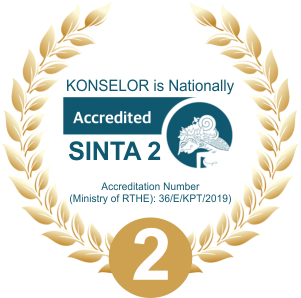Maternal outcomes in low risk nulliparous women admitted in latent and active phase of labour
 ),
), (1) Shifa College of medicine, Islamabad
 Corresponding Author
Corresponding Author
Copyright (c) 2021 Kiran Jabeen
DOI : https://doi.org/10.24036/02021102111911-0-00
Full Text:
 Language : en
Language : en
Abstract
OBJECTIVE:
To determine and compare the frequency of maternal outcomes in terms of augmentation of labour and cesarean section in low risk nulliparous women admitted in latent phase and active phase of labour.
STUDY DESIGN:
Descriptive case Series conducted from 16th December,2016 to 15th June,2017 at obstetrics and gynaecology Unit-1,Holy Family Hospital, Rawalpindi.
METHODOLOGY:
130 nulliparous pregnant women in labour fulfilling the selection criteria were included in study at the time of admission in hospital and followed up till delivery and discharge. The study group was stratified in latent and active phase of labour and analysed accordingly. Maternal outcomes were assessed in each woman and recorded in the structured proforma.
RESULTS:
Frequency of active phase of labour was calculated as 46.92% and latent phase as 53.08%. Comparison of maternal outcome in both groups shows that 29.51% cases of active phase and 56.52% cases of latent phase had caesarean delivery (p=0.002). 70.49% cases of active phase and 49.18% cases of latent phase had vaginal delivery (p=0.002). Augmentation through oxytocin was recorded in 16.39% in active phase and 31.88% in latent phase (p= 0.04).
CONCLUSION:
The frequency of maternal outcomes in terms of augmentation and cesarean section in low risk nulliparous women admitted in latent phase is significantly higher when compared to those admitted in active phase of labour.
KEYWORDS:
Labour, active phase, latent phase, augmentation, maternal outcomes
Keywords
References
Neal JL, Lowe NK, Ahijevch KL, Patrick TE, Cabbage LA, Corwin EJ. "Active Labour" duration and dilation rates among low risk, nulliparous women with spontaneous labour onset: a systemic review. J Midwifery Women’s Health.2010;55:308-18
NICE guidelines. Intrapartum care: care of healthy women and their babies during childbirth. CG190. LONDON. NICE;2014
Chuma C, Kihunrwa A, Matovelo D, Mahendeka M. Labour management and Obstetric outcomes among pregnant women admitted in latent phase compared to active phase of labour at Bugando Medical Centre in Tanzania. BioMed Central, Pregnancy and Childbirth.2014;14:68
Naghizadeh S, Shafaie FS, Ghojazadeh M. The Effects of Early Admission of Pregnant Women During Latent Phase on Pregnant Outcomes in Tabriz Taleghani Hospital. International Journal of Women’s Health and Reproduction.2014;2(4):254-59
Janna JR, Chowdhury SB. Impact of Timing of Admission in Labour on Subsequent Outcome. CBMJ.2013;02(01):21-29
Anwar N, Albassam. The Outcome of latent phase vs. Active phase admission to labour room of low risk nulliparous women in labour. Fac Med Baghdad.2010;52(2):147-51
Naghizadeh S, Shafaie FS, Ghojazadeh M. Comparing the Postpartum Hemorrhage based on HB and HCT in Women Admitted in Latent and Active Phase of Labour. The Journal of Urmia Nursing and Midwifery Faculty.2013;11(8):630-37.
Gupta S. To Study Fetomaternal Outcome and Progress of labour among Induced versus spontaneous labour in nulliparous women. Sch.J.App.Med.Sci.2014;2(5A):1577-80
Norwitz ER, Robinson JN, Repke JT. Labour and delivery. Gabbe SG, Niebyl JR, Simpson JL, eds.Obstetrics: Normal and problem pregnancies. 3rd ed. New York: Churchill Livingstone;2003.
Friedman EA. Primigravid labour;a graphicostatistical analysis. Obstet Gynecol. 1955 Dec. 6(6):567-89.
Roy A, Patra KK, Mukhopadhyay S, Guha S. Study of drotaverine on first stage of labour and pregnancy outcome. J Indian Med Assoc 2007;105(8):450-2.
ACOG. American College of Obstetricians and Gynecologists Practice Bulletin. Dystocia and augmentation of labour. Clinical management guidelines for obstetricians-gynecologists. No 49. American College of Obstetricians and Gynecologists: Washington, DC;December 2003.
Cheyne H. Effects of algorithm for diagnosis of active labour: cluster randomised trial. BMJ, 2008. 337: p. a2396.
Bailit JL. Outcomes of women presenting in active versus latent phase of spontaneous labour. Obstet Gynecol, 2005. 105(1): p. 77-9.
Jessica Bruns, S.N., Differences in inflammation, interventions rates, and birth outcomes in active and pre active labour admission groups thesis, 2011.
Albassam, A.N., The outcome of latent phase vs. Active phase admission to labour room of low risk nulliparous women in labour. J Fac Med Baghdad, 2010;52.
 Article Metrics
Article Metrics
 Abstract Views : 219 times
Abstract Views : 219 times
 PDF Downloaded : 40 times
PDF Downloaded : 40 times
Refbacks
- There are currently no refbacks.
Copyright (c) 2021 Kiran Jabeen

This work is licensed under a Creative Commons Attribution 4.0 International License.







